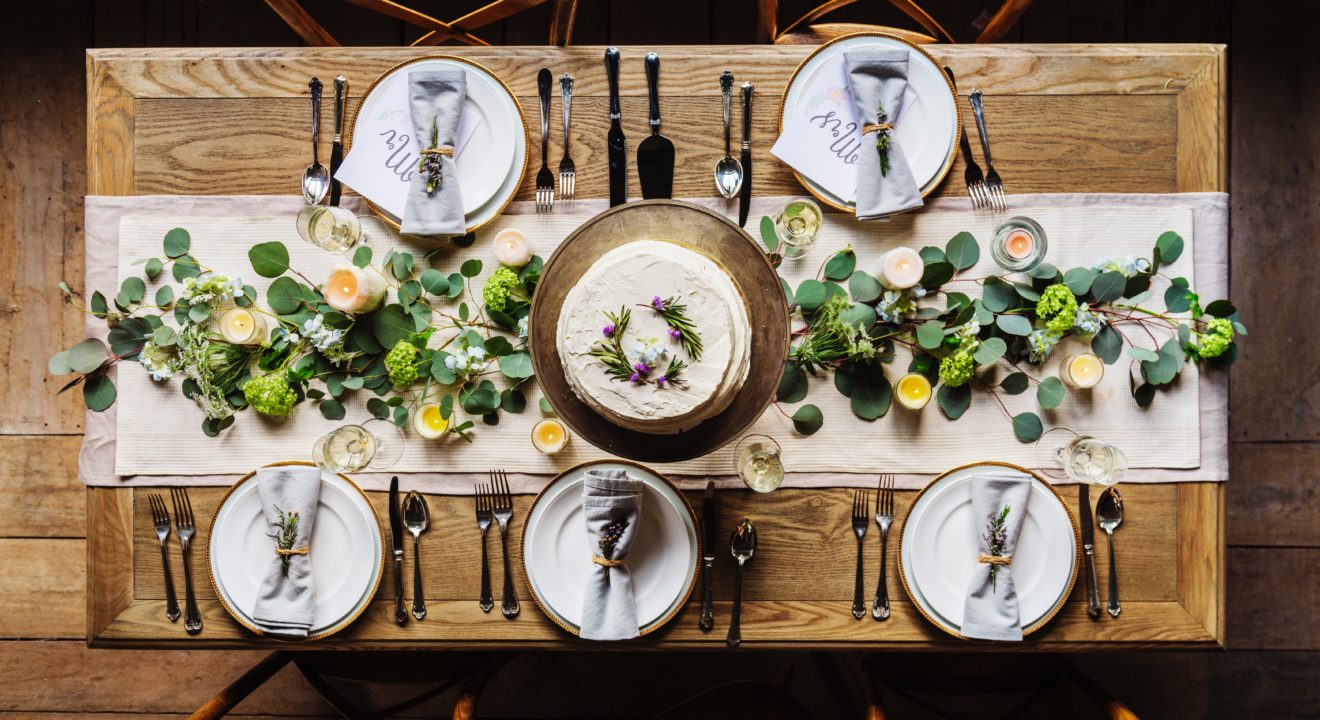November 11, 2010
Let's go green for the holidays!


White Christmas is a cultural and traditional icon of our society. Hopefully, sooner rather than later, Green Thanksgiving will also become an American standard.
White Christmas is a cultural and traditional icon of our society. Hopefully, sooner rather than later, Green Thanksgiving will also become an American standard.
Naturally, the most eco-friendly meal would be a 100 percent vegan menu. Let’s be honest, though, do you really want to celebrate with turkey-shaped soy? If you do, more power to you. But if a “tofurky” feast isn’t your thing, bear in mind you still have other savory and sustainable options: Choose a turkey that is USDA-Certified organic and free-range, meaning it is given organic feed and is free from confinement. You can find a list of farmers at Local Harvest who use organic methods to raise their birds – perhaps there is one near you?
If you do choose to enjoy soy for Thanksgiving there are many vegetarian and vegan soy “turkeys” available, or you can even try making your own. Click here for an article offering many non-meat turkey options. There are also some vegetarian
gravy recipes if you want the full Thanksgiving meal experience.
It’s also the season for pumpkin, potatoes, sweet potatoes, and yams. Traditional Thanksgiving food is usually in season anyway, so why not get the freshest possible ingredients for your mashed potatoes and pies by visiting your local farmer’s market? Eating produce that’s in season — especially if grown locally — cuts down on the carbon emissions needed to grow, plow, ship, truck and fly it from the farm to your table. If you can’t find a farmer’s market in your area, try to purchase as many organic, in-season ingredients at the grocery store as you can. Here is a list of recipes by in-season ingredient that you can try for your Thanksgiving meal.
Planning final headcount will help monitor unnecessary food waste, so get those RSVPs early! While we all love leftover turkey sandwiches, inevitably, some food spoils quickly forcing you to toss it; have guests bring a reusable dish to share
leftovers. If there are any scraps left, try composting them to limit waste and add nutrients to your garden.
You can also consider, making your Thanksgiving meal a potluck and ask your guests to bring different side dishes so all you have to worry about is getting the best possible turkey. Share vegan, vegetarian, in-season and organic recipes as a little hint for the menu theme. This allows everyone to participate in creating a sustainable soiree.
Don’t stop with dinner; incorporate a touch of green into décor as well. Create the perfect holiday ambiance with candles, but choose ones made out of soy or beeswax as they last longer and burn cleaner than paraffin and petroleum candles that emit toxic chemicals. Also, natural accents like baskets filled with beautiful fall leaves or a cornucopia centerpiece with organic pumpkins and gourds, are not only affordable but also eco-friendly.
When setting up for the feast, forget the disposable plates, paper napkins and plastic cutlery and opt for the real deal, including linens. If your party is too large for reusable items, try more biodegradable and sustainable party supplies that can be composted after use.
Before turkey-coma sets in, be sure to keep your daily habits of recycling glass, plastic and aluminum, and compost the leftover treats after the party. Also, remember to let leftovers cool before storing as steam can increase the temperature inside the refrigerator, which will then use more energy to keep it cold. Think you might have too much, even for those delicious post-Thanksgiving meals? Send guests packing with some turkey takeaways!
First, bring reusable bags when shopping. Planning for a big meal means taking food home in a bundle of bags, so pass on the plastic at the grocery store. Secondly, because of the popularity of organic products, companies are starting to slap on organic labels for items that are not truly organic. Read the labels carefully. USDA”s National Organic Program regulates
the standards for any farm, wild crop harvesting, or handling operation that wants to sell an agricultural product as organically produced so look for anything USDA-certified.
You may find that turkey that is free-range, organic and free of antibiotics is a bit pricier than the others at the supermarket. However, it is a better choice for the environment, your health, and the taste is incomparable. If that’s not enough, just remember that following the rest of the tips — like making less food, not buying disposable plates and cutlery, reducing electricity, using natural decorations, etc — will end up saving you money.
Most of all, enjoy the time with friends and family and be thankful that we have an opportunity to correct mistakes of the past by making environmentally friendly holiday decisions.
What are some ways you plan to go green this Thanksgiving? As always, I enjoy reading your comments.